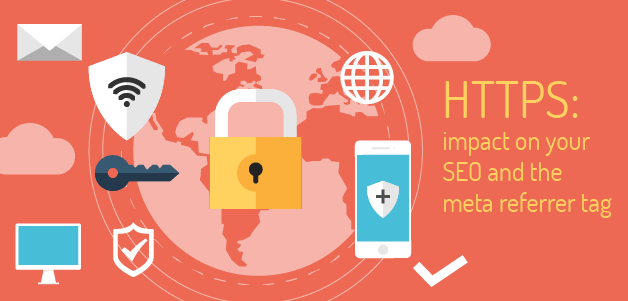Speed and website performance have become the most demanded metrics by web users. Well, finally their plea has been heard as the search engine giant, Google now brings support for HTTP/2. If someone has told you that your website can load faster, then you’ve heard it right as by implementing HTTP/2, you are going to get tremendous speed increase which is no less than a revolution in the Internet industry. Forget all those web design hacks that you used till date to increase your site performance as my making a simple change you will be able to make a big difference in your site and boost its ranking in search results.
Also read: How To Make A Beautiful Home Page That Wows Your Customer
What is HTTP/2?
HTTP/2 is a much required refresh to HTTP protocol that was based on Google’s own SPDY protocol it created to facilitate faster communication between browsers and servers. The results have been so promising that the Internet Engineering Task Force (IETF) used SPDY as the basis for HTTP/2 too. The new protocol is the replacement of the current HTTP/1.1 protocol that powers all Internet web traffic today.
What’s the need of HTTP/2?
If you look a few years back, you will realize that the Internet scenario was completely different at that time. There was limited server hardware, slow internet connections and smaller web pages. So, at that time, the implementation of HTTP1.1 was not less than a huge achievement. However, the demands of today’s internet landscape are quite different and HTTP1.1 was not enough for that. For example, when a web page is loaded by a web browser using HTTP/1.1, it can request resources (like an image, JavaScript file, etc) one at a time, per connection to the server. While using two HTTP connections make things better, but the browser still expends a lot of time waiting to get a download. And only two resources can be downloaded at a time.
Modern browsers solve this problem by making between 2-6 connections per server, but it is still not an optimal approach as connection is used so inefficiently itself. With an average web page of 100+ resources, the delay in individual requests makes the page load slowly. While there are several web design optimization techniques by which you can make your site load faster like combining JavaScript or CSS files, these don’t make a very huge difference when it comes to improving site performance. This is when HTTP/2 comes into limelight.
Also read: 5 Ways to Reduce the Loading Speed of your Website
What HTTP/2 does and what are its benefits?
HTTP/2 makes more efficient use of underlying network connections. It makes a single connection to the server and allows multiplexing of multiple requests over that connection to receive multiple responses at the same time. Here are a few other benefits of HTTP/2:
- Best use of network connections: It makes the best use of network connections. For example, while you are waiting for a single resource to finish downloading, the browser can finish downloading image 2 as well before image 1 completes instead of sitting idle.
- Prevents head-of-line blocking: It prevents head-of-line blocking. Under HTTP, browsers can only download one resource at a time per connection, which means in this case, a large/slow resource, for example an image 2 MB can block all other resources from downloading until complete. However, with HTTP/2, browsers can download all other 5 KB images in parallel over the same connection and make them available to users, enhancing their experience.
- Server push: The third benefit is HTTP/2’s “Server Push” feature which allows the server to proactively push content to a user even when they don’t request it. For example, when someone visits your website, your server can actually “push” the image of your logo down to the browser before it even knows it needs it. This way, the browsers can load pages much faster than was previously possible.
- Best compatible with HTTPS: Moreover, HTTP/2 works best with HTTPS. Most web server software will only use HTTP/2 over an encrypted HTTPS connection for compatibility reasons. So, enabling HTTPS not only protects the security of your users, it is also good for your search ranking, and the most effective way to adopt HTTP/2.
What does HTTP/2 mean for SEO?
Apart from faster page load times which help provide a boost in organic search results, it provides better user experience as well which makes it an in important ranking factor in 2016. Google also announced that it will probably be adding more UX indicators to algorithms or will add HTTP/2 as an important ranking signal in the later part of the year. Therefore, the SEO companies that have still not upgraded to this new protocol may see a considerable drop in their website rankings. So it is better to be prepared, than repenting afterwards as many websites have already updated to HTTPS yet in order to make the switch to HTTP/2.
How Can You Upgrade To HTTP/2?
Web Developers, SEO experts, Marketing teams and everyone should be making the crucial move to HTTP/2. There is no downside to upgrade, since a user can load a site like they always have if they cannot load it over HTTP/2. The advantage is that it leaves room for a better user experience and a faster website browsing which increases sales rates and conversions.
You need to update your server software if you want to update to HTTP/2. Perform load impact test to see if it would be worth it to switch, and check of your hosting company offers HTTP/2 support. If they don’t, check if your host has support for SPDY as it could also provide better speed to your website and currently has more support than HTTP/2.
So, if you have a website, it’s time to make the switch if you haven’t yet, as it’s definitely worth it. Get in touch with Novage Communications- the best web design agency in Singapore that can help you set up HTTP/2.







